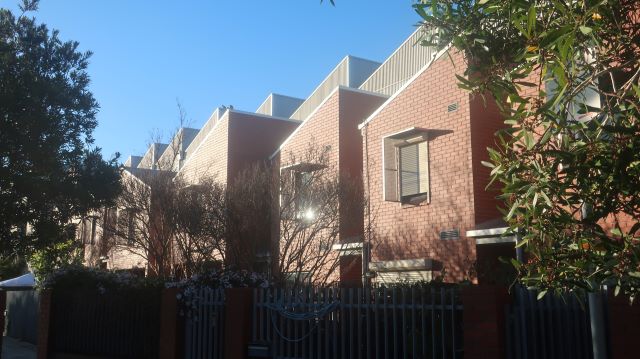
A story of the Raglan Ingles housing estate
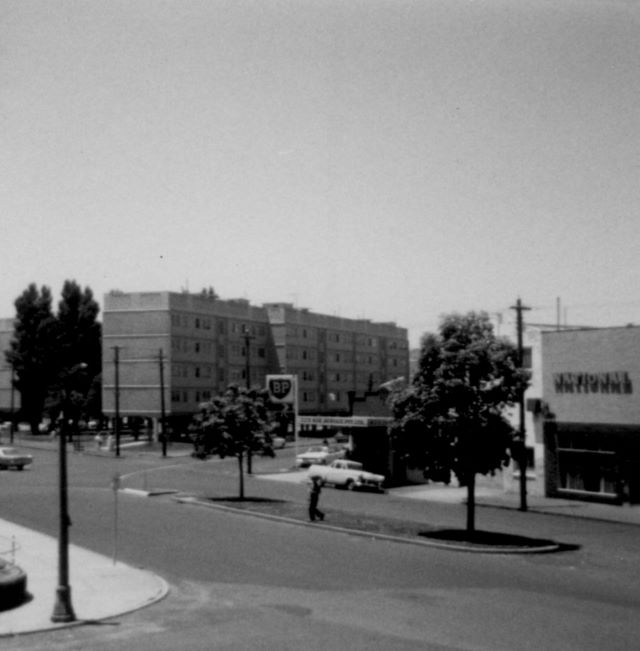
In the late 1990s, tenants of the Raglan Ingles St housing estate in Port Melbourne protested about the conditions on the estate. Some dwellings on the estate, built in the 1960s, were damp and mouldy. To highlight how bad the conditions were, tenants set up a tent protest on the prominent corner of Crockford and Ingles St.
That corner of Ingles and Crockford St is well known to be a watery one as the Floodgate Hotel (now Brulee) suggests. A well known photograph of the former Globe Hotel shows a cable tram making its way through floodwaters in Crockford St at this very location.
The Bracks Labor government, elected in September 1999, it committed to renewing the estate.
The estate was demolished in May 2001.
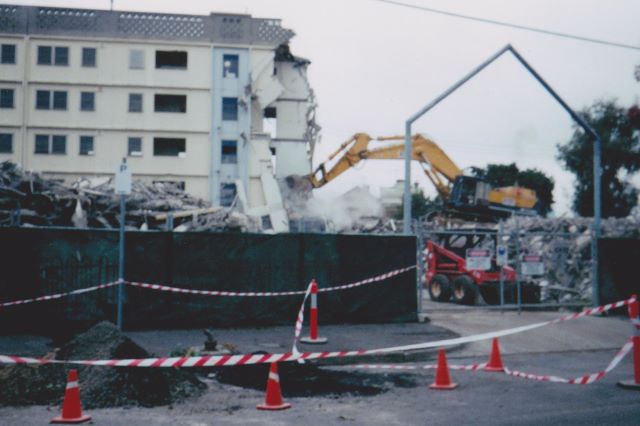
Local member and member for Victorian Communities, John Thwaites, and Candy Broad, the Minister for Housing, turned the first sod of the new development on 11 February 2003. The renewed estate was to comprise 64 units – 25 older persons, 21 two bedroom, 10 townhouses and 8 single bedroom units. The estate re-development was to be cross-subsidised by 50 private dwellings on the corner of Crockford St and Ingles St.
It was in the middle of the Millenium drought so there was a focus on rain water collection and re-use, as well as energy saving measures. The estate was to have a five star energy rating, ambitious in Victoria at that time.
The plan for the 50 private dwellings did not go down well. A campaign ensued. People argued that since the new estate had very little open space, unlike the 1960s estate, the area set aside for the private dwellings should become open space.
In the end, the corner was made available for a childcare centre, the lack of accessible childcare in Port Phillip being a red hot topic at the time.
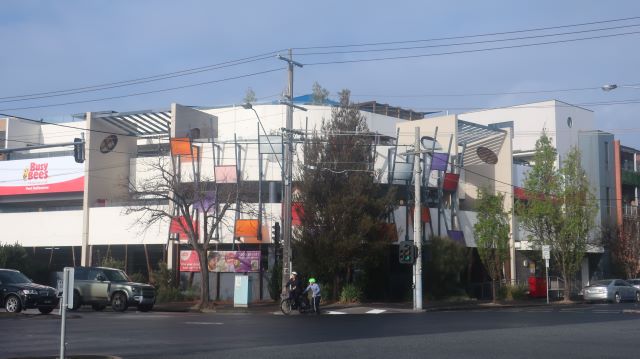
The new development deliberately countered the modernism of the 1960s estate. Instead of being plain and austere, it was composed of many different elements and materials. It referenced Port Melbourne’s industrial history with saw tooth roof forms and the use of corrugated iron.
Residents were re-located and offered priority should they wish to return. I don’t know how many tenants did come back.
The City of Port Phillip contributed to the loss of open space by creating a pocket park from some redundant road reserve, shielding it from the busy Pickles and Ingles St intersection with a timber noise wall.
The centrepiece of the small park is a table with a shade structure above it. When the sun is overhead, it casts shadows that suggest a lace table cloth.
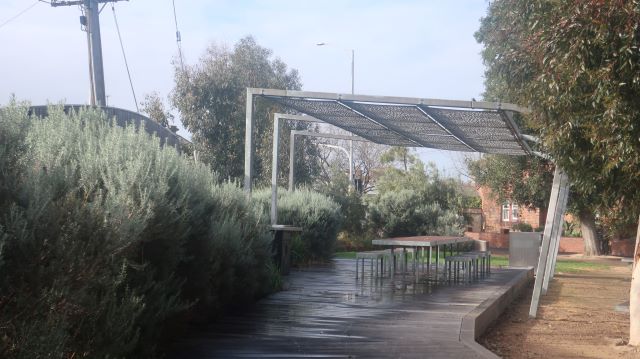
The 1960s estate had in turn replaced single fronted houses, just like those on the other side of Raglan St, which were acquired by the Housing Commission of Victoria.
In telling this story, I am relying on my memory as there is little to be found online about this period. It’s easier to read the papers of 1900 than 2000 online. The campaign of those tenants at the turn of the century does not seem to have been documented.
Recalling the history of the Raglan Ingles estate and the recent demolition of the Barak Beacon estate raises the question of how to build quality housing that stands the test of time, that doesn’t need to be replaced every fifty years.
A strong theme is emerging that wherever possible, buildings should be retained and re-purposed, rather than demolished because of the greenhouse gas emissions from demolition and the carbon footprint of redevelopment.
Recently, Michael Gove, the UK Secretary of State for Levelling Up, Housing and Communities refused Marks and Spencer’s application to demolish their building in Oxford St in London.
Gove said he had refused permission partly because it would “fail to support the transition to a low carbon future, and would overall fail to encourage the reuse of existing resources, including the conversion of existing buildings”.1
In addressing the housing crisis, it is vitally important that any new housing that is built is durable, climate comfortable and affordable to operate as well as to build.
More
1 Sarah Butler Marks and Spencer refused permission to demolish and rebuild The Guardian 21 July 2023
Nigel Bertram’s writes about the sort of building that passes the test in this article for ArchitectureAU
Aboriginal Housing Victoria – Affordable Housing Project by Breathe 15 August 2023


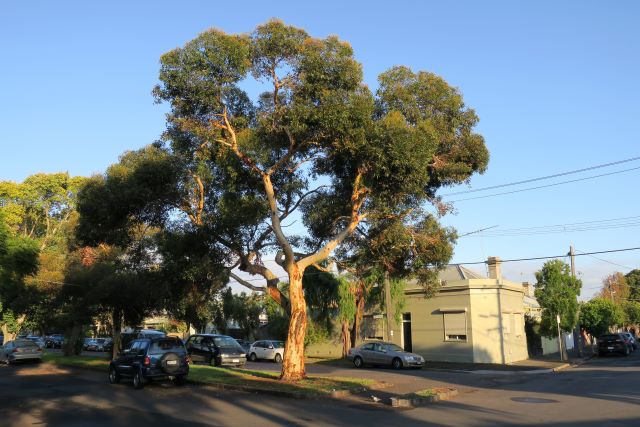
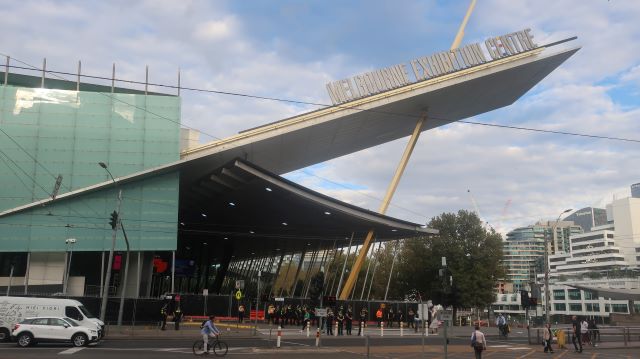
Leave a Reply